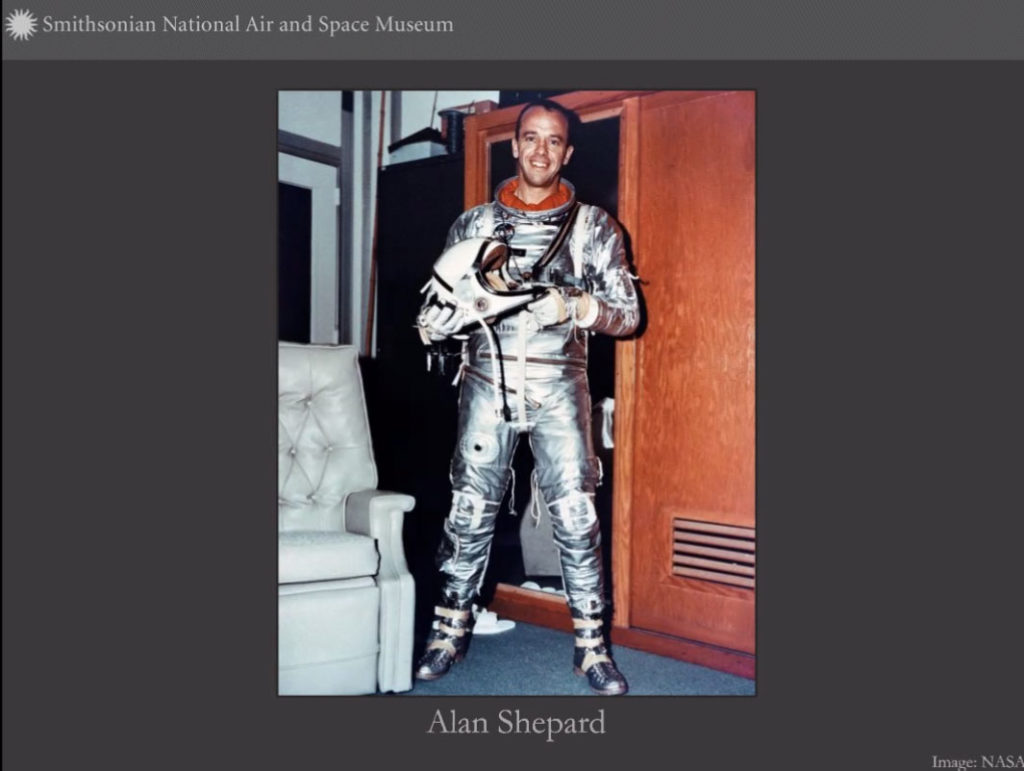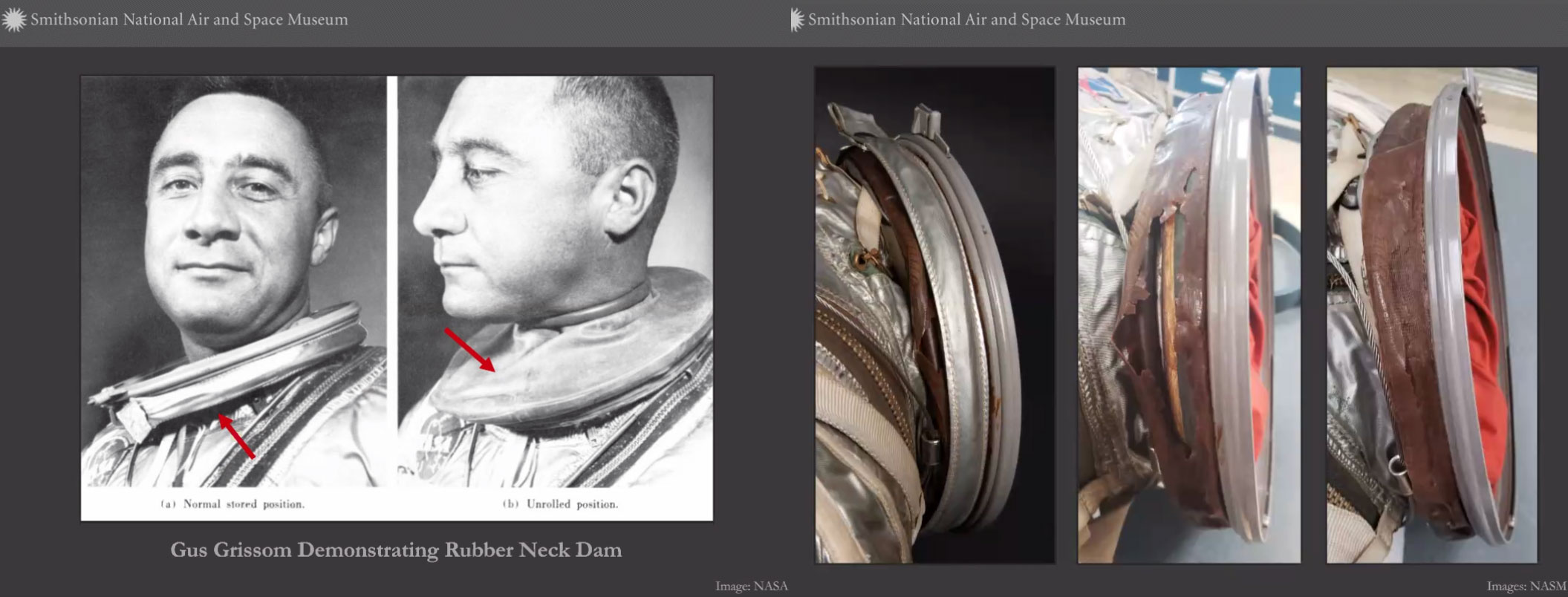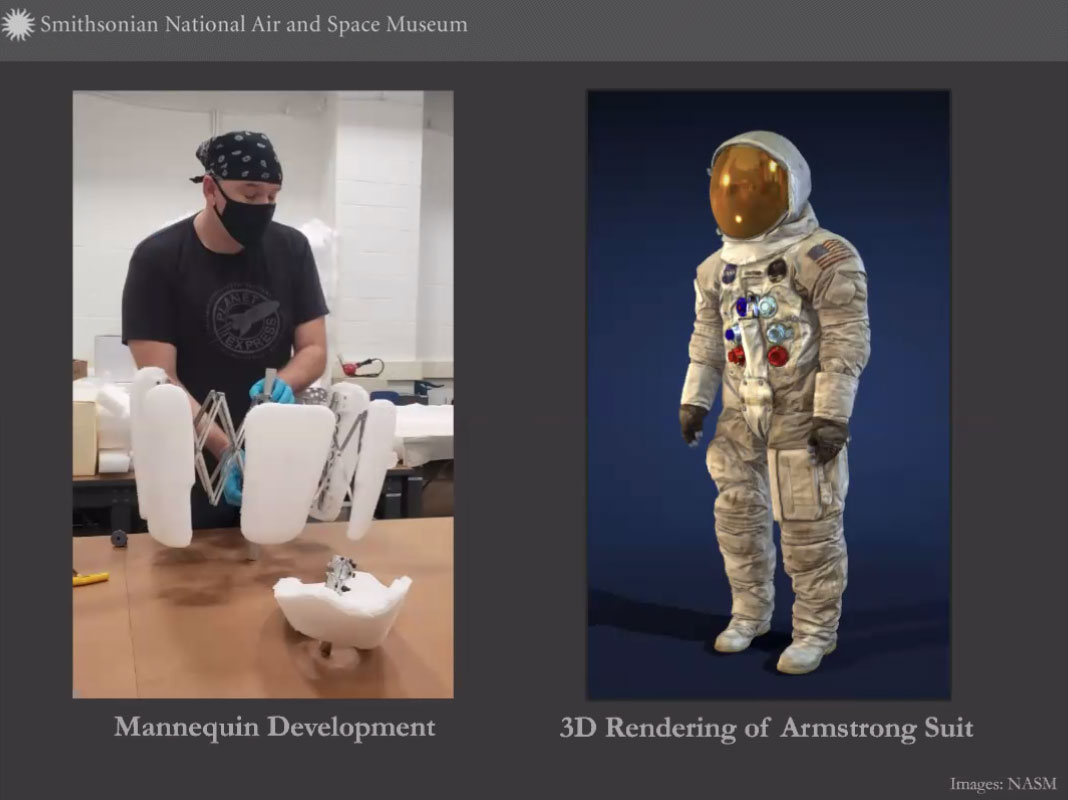Ring 3: The Great Beyond
Rebooting the Suit: Research and Treatment of Alan Shepard’s Mercury Spacesuit
Discussion of the ongoing treatment process by Maggie Bearden, Objects Conservator at the National Air and Space Museum (NASM)

Conservator Maggie Bearden discussed the ongoing treatment process of Alan Shepard’s Mercury Project spacesuit during the final ring of January 2022’s 3-week, virtual 3-Ring Circus. The treatment is being performed in preparation for exhibiting the suit at the National Air and Space Museum, in its own case next to the capsule.The project began as part of a crowdfunded Kickstarter program to raise $500,000 for the preservation of Neil Armstrong’s Apollo 11 suit. Once that goal was met, a stretch goal of $200,000 was proposed for the preservation of Alan Shepard’s suit. Alan Shepard was the first American to enter space on May 5, 1961 in the Mercury capsule, Freedom 7. The “Mercury Spacesuit” was based on the design of the Navy’s Mark IV nylon high-altitude flight suits. It was manufactured by BF Goodrich using fabric made by 3M called Scotchshield. The fabric was developed for firefighting because the 5 microinch thick aluminum coated surface reflects 90% of incident radiation—. To confirm the composition of the exterior coating, XRF analysis was utilized. It revealed the presence of aluminum but also unexpectedly high zinc content. The suit spectra was compared to a contemporary Mark IV pressure suit and it was determined the zinc content came from the substrate fabric, not the metallic coating.

The condition assessment revealed that the brown spots on the exterior of the suit is the adhesive for the metallic coating and is degrading with age. The decision was made not to tone the metallic losses during treatment as they represent historic use. The suit is in better condition than other Mercury spacesuits, due to the short 15-minute space flight. The rubber neck dam of the suit exhibits degradation from age, and is stuck together in areas, rolled, and has splits and losses. Toned silk crepeline and Jade R reversible adhesive were used to consolidate areas of weakness and loss. Padding from the previous display form was stuck inside the leg. A low suction vacuum method was used in an attempt to remove the padding, but with no success. She wrapped self-adhesive Velcro to a tube with a borescope threaded through the interior and extracted the padding piece by piece. The boots were conserved using silk crepeline and Lascaux adhesive to stabilize interior tears.The suit was previously exhibited at the National Museum of American History. An updated form was needed for the upcoming exhibition at the National Museum of Air and Space. The mannequin previously used had a metal frame. When choosing the new form for mounting it was determined that a Dorfman would not be suitable, due to the need for airflow inside the suit to minimize off-gassing onto the form. A 3-D form is in development, which features an expanding torso that will collapse during dressing; it can be expanded and locked once the suit is mounted. The collapsible torso will be completely open in the middle to allow for airflow. The hips will be like Dorfman form with legs on rods for support and again to allow for air circulation. The project is ongoing, as the second version of the form is in development.

Attendance: 79 participants